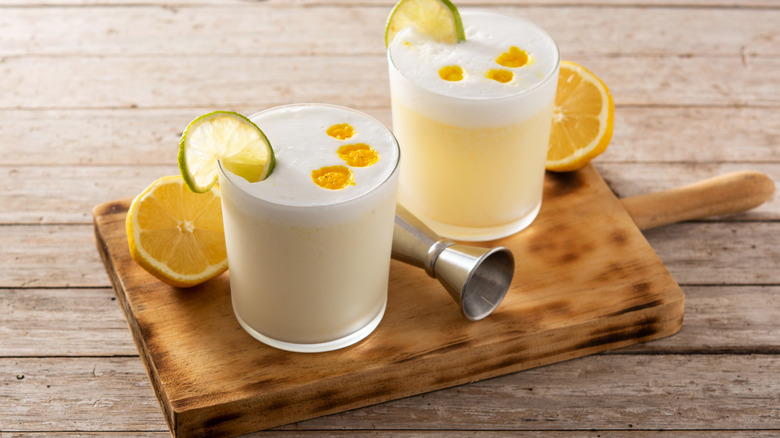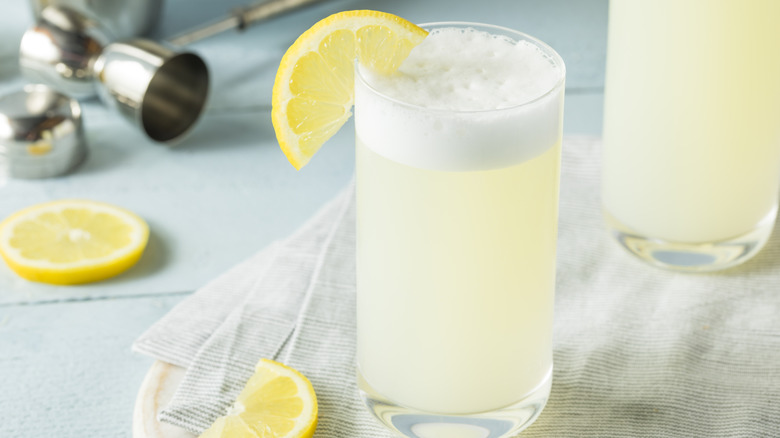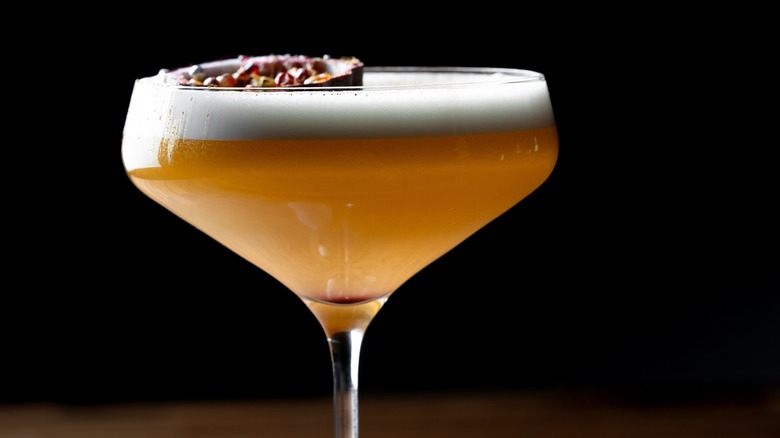Cocktail Foam Is Making A Long-Awaited Comeback
Retro is the new thing in fine drinking and dining these days, with tacky staples of the '90s and early 2000s bringing a delightfully kitschy energy back to a new era of unabashed conspicuous consumption. Apple martinis, espresso martinis, and really every kind of 'tini have made their way back onto cocktail bar menus, and other nearly-forgotten bar trends are also making a stylish comeback.
One particularly fascinating revival is the resurgence of cocktail foam. While cocktail foam had its heyday in the early aughts, during the molecular gastronomy boom, classic cocktails like the Gin Fizz or Pisco Sour have long utilized creamy egg whites to introduce a velvety texture that beautifully complements tangy citrus flavors.
Molecular gastronomy was a culinary branch fixated on transforming perfectly ordinary foods into nearly unrecognizable creations. Solids turned into liquids, liquids became foam, and essences were captured in smoke or reimagined as translucent forms. These innovative techniques reshaped our expectations of what a good cocktail should taste or look like.
The Drink Masters effect
The unexpected return of cocktail foam has been partly attributed to the reality competition show "Drink Masters," which is basically "Top Chef" for mixologists. Throughout the show's debut season, numerous challenges required contestants to create foam from ingredients as diverse as sesame and passion fruit.
"It provides a lot to the cocktail texturally that you can't get out of shaking the ever-living crap out of a drink," explained Kate Gerwin, a "Drink Masters" finalist and esteemed bar owner, during an interview with Punch.
In the age of social media influencers, the inclusion of cocktail foam in drinks makes perfect sense, as it introduces a unique and visually appealing element to an otherwise ordinary drink. Not only does the foam provide an intriguing textural experience, but it also serves as a blank canvas for branded ink printing, demonstrating that the realm of design extends far beyond the realms of latte art. Upscale bars have been eating these aesthetic possibilities up, showcasing foam-topped cocktails in bars as far apart as Kansas and Barcelona.
How to make cocktail foam
To create a velvety texture and enhance the body of a cocktail, bartenders often incorporate egg whites, which are aerated through a dry shake without ice. However, aquafaba, the viscous liquid found in canned chickpeas, has become a popular vegan alternative.
Heavy cream and gelatin are other common ingredients used for cocktail foam, especially when utilizing the iSi Gourmet Whip foam canister. A stabilizer like lemon juice is often added to prevent the cocktail foam from deflating. Originally designed as a whipped cream maker, the iSi foam tool has gained popularity among bartenders and mixologists for its ability to create thick, evenly distributed foam and transform various flavors into a light, edible cloud.
This type of foam is also called "espuma," a Spanish term that entered the cocktail bar lexicon with the influential flair of Spanish chefs in the molecular gastronomy movement. It has left an indelible mark on the world of mixology, revolutionizing the way cocktails are crafted and presented.



